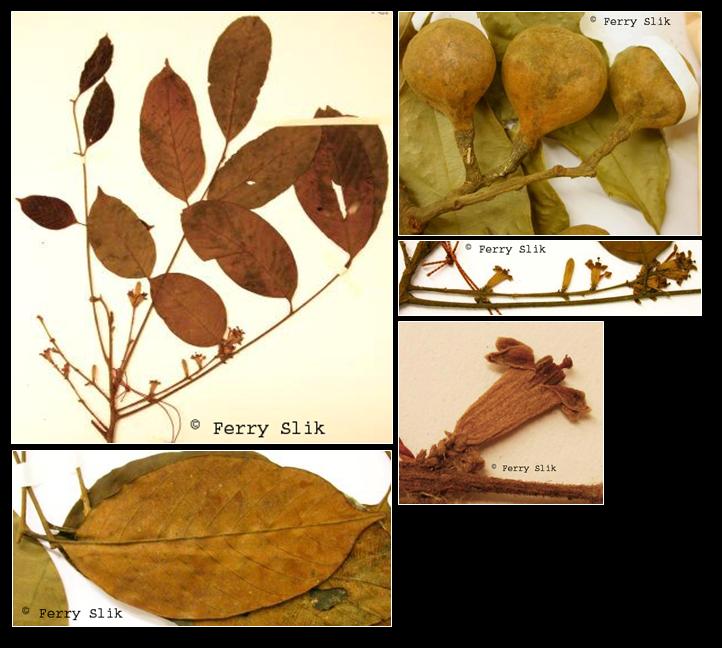Dysoxylum excelsum Blume, Bijdr. (1825)
Latin for 'large or tall'.Synonyms
Alliaria procera (Hiern) Kuntze
Azedarach nigra Noronha
Dysoxylon gobara (Buch.-Ham.) Merr.
Dysoxylum altissimum Merr.
Dysoxylum arnoldianum K.Schum.
Dysoxylum excelsum var. hasseltii Miq.
Dysoxylum excelsum var. genuinum Koord. & Valet.
Dysoxylum excelsum var. parvifolium Koord. & Valet.
Dysoxylum excelsum var. pedicellatum Koord. & Valet.
Dysoxylum gobara (Buch.-Ham.) Merr.
Dysoxylum hasseltii (Miq.) Koord. & Valet.
Dysoxylum havilandii Ridl.
Dysoxylum huberti Harms
Dysoxylum macgregorii C.DC.
Dysoxylum microbotrys King
Dysoxylum motleyanum (C.DC.) Ridl.
Dysoxylum pallidum Merr.
Dysoxylum peerisiae Kosterm.
Dysoxylum procerum Hiern
Dysoxylum procerum var. integrum C.DC.
Dysoxylum procerum var. macranthum C.DC.
Dysoxylum procerum var. motleyanum C.DC.
Dysoxylum turbinatum King
Epicharis dubiosa Span. ex Miq.
Epicharis procera (Hiern) Pierre
Guarea acuminata Wall.
Guarea disyphonia Griff.
Guarea gobara [Aiken] Buch.-Ham.
Guarea procera Wall.
Guarea oblonga Wall.
Hartighsea excelsa (Blume) A.Juss.
Hartighsea gobara Wight & Arn.
Macrocheton excelsum (Blume) M.Roem.
Trichilia excelsa Spreng.
Diagnostics
Mid-canopy tree up to 36 m tall and 80 cm dbh. Stipules absent. Leaves
alternate, compound, leaflets penni-veined, glabrous to hairy. Flowers ca. 16 mm
diameter, white-creamish, placed in racemes or panicles. Fruits ca. 33 mm
diameter, pinkish-orange, fleshy, dehiscent capsules.
Description
Tree to 36 m; bole to 80 cm diam., buttressed to 3 m, buttresses reaching 2.5 m out,
concave. Bark smooth to slightly flaking, lenticellate; inner bark reddish brown with
resinous smell; sapwood fawnish white; heartwood brownish-red. Leafy twigs 5-9
mm diam., lenticellate, +/- pubescent when young; apical bud with fist-shaped leaves.
Leaves 25-90 cm, 2-4(-5)-jugate, +/- paripinnate with terminal scar; petiole 5-10 cm,
+/- puberulent, +/- flattened adaxially, weakly swollen at base. Leaflets (the most distal the
largest) 10-25(-51) by 4-10(-21) cm, ovate-elliptic to -lanceolate, subcoriaceous, glabrous
to rufescent-pubescent abaxially, especially on venation, opposite to alternate,
bases rather symmetrical, acute to attenuate, apices obtuse to acuminate, costae 9-12 on
each side, arcuate, obscurely anastomosing at margin, impressed adaxially, prominent
abaxially like the midrib in sicco; petiolules 5-15 mm, sulcate in sicco. Thyrse up to 1 m
long but usually less and sometimes (in females) as short as 10 cm, axillary to supraaxillary;
axes +/- densely rufescent pubescent, most proximal branches to 20 cm with
secondary branches to 3 cm, bearing cymules of 1-3 sweetly scented (jasmine, honeysuckle)
flowers; bracts c. 1.5 mm, triangular, pubescent; pedicels c. 1 mm, articulated
with pseudopedicel up to 3 mm. Calyx continuous with pseudopedicel, c. 1-2 mm
long, 4-5 mm diam., shallowly cupular, pubescent without, pinkish, margin rather
irregularly 4- (or 5-)toothed. Petals 4 (5), 6-15 by 3-4 mm, nanowly oblong, valvate,
minutely sericeous without, creamy or pinkish white. Staminal tube glabrous or weakly
puberulent within or without, white, margin truncate to weakly 8- (or 10-)crenate; anthers
8 (10), c. 1 mm long, included, glabrous. Disk up to half as long as staminal tube,
with descending hairs within and c. 8- (or 10-)toothed margin, markedly pilose. Ovary
densely sericeous, 3- or 4-locular, each locule with 1 or 2 ovules; style glabrous in distal
half, otherwise sericeous; stylehead discoid to subcapitate. Capsule up to 5(-7.5) cm
diam., 4 cm long, flattened globose to pyriform, 3- or 4-lobed, glabrous to scurfy, chestnut
brown when ripe. Seeds 1-4, c. 2.5 cm long, 1.5 cm wide, subreniform, pendent
on funicles at fruit dehiscence, testa blight red; hilum white. [from Flora Malesiana]
Ecology
In undisturbed mixed dipterocarp to sub-montane forests up to 1100 m
altitude. On alluvial sites near or along rivers and streams and in swamps. On sandy to clay
soils, also on limestone. Fruit said to be poisonous hut attractive to pigeons (Motley).
Uses
The wood is locally used for planks and general construction work.
Distribution
From Sri Lanka and India to South China to New Guinea and the Solomon
Islands.
Local names
Borneo: Durong, Plukrak.
Philippines: Kulig-baboi.
